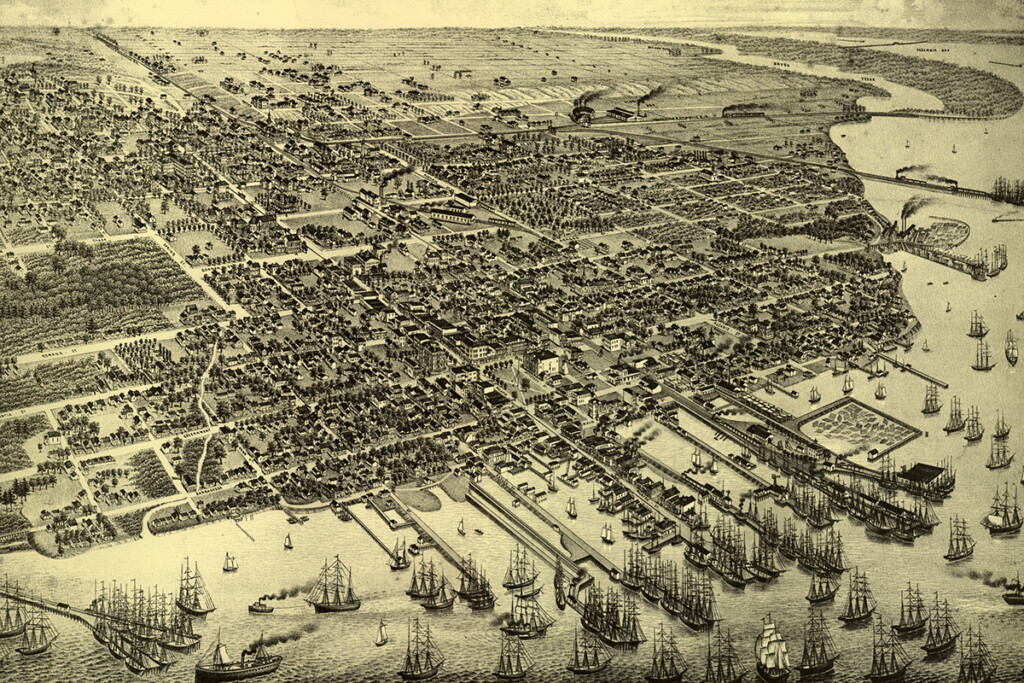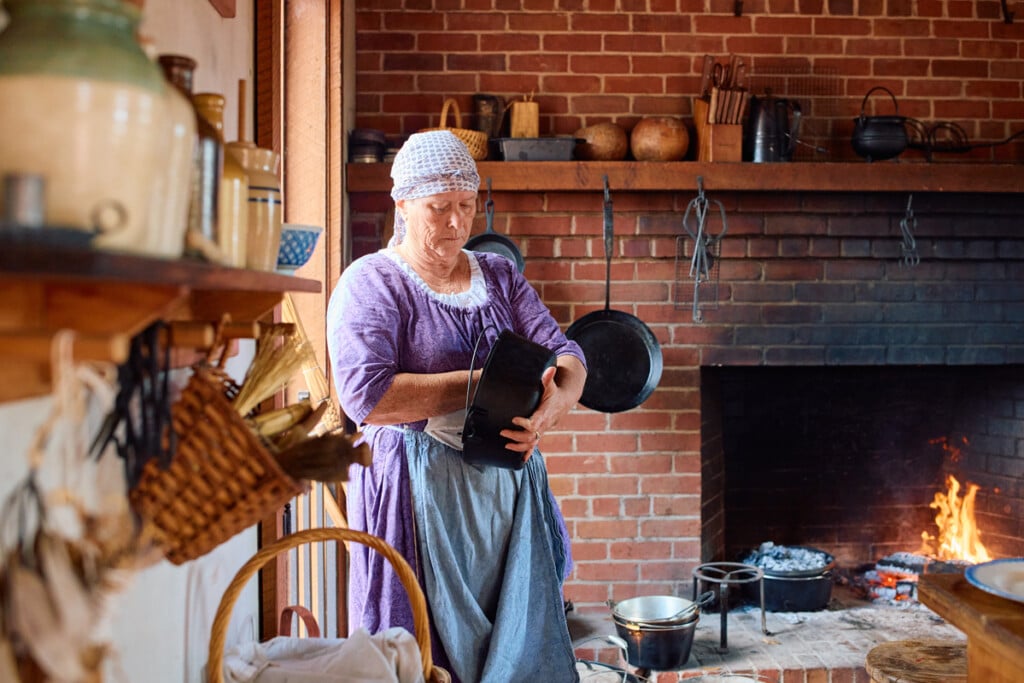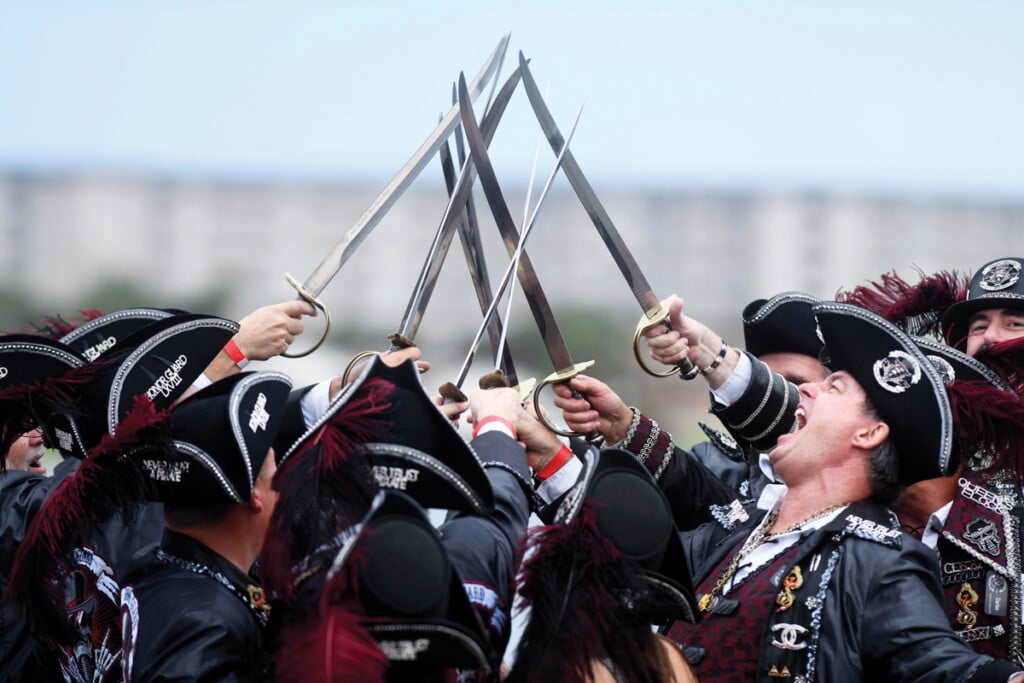The Paths Once Taken
Trailblazers took on an untamed Florida

For generations, schoolchildren in the United States have learned about the “original 13 colonies.” Few discover that there existed a 14th and a 15th.
The latter two came about when Spain ceded its Florida holdings to Great Britain at the conclusion of the Seven Years’ War. East Florida extended from the Apalachicola River to the Atlantic Ocean; West Florida’s westerly boundary was the Mississippi River.
The Florida colonies are “little heralded” in history primers, notes Leslie Kemp Poole in her newly released gazetteer of a book, Tracing Florida Journeys, “since they remained on the Loyalist side in the American Revolution.”
Poole, an associate professor of environmental studies at Rollins College in Winter Park, does more than retrace familiar storylines and the beaten paths of sanitized accounts of the past.

↑ In 1821, Andrew Jackson (depicted above) moved his family to Pensacola where he served as Florida governor for nine months. Later calling the area a “perfect plain,” Jackson’s wife was initially unfond of Pensacolan society. Photo courtesy of State Archives of Florida, Florida Memory
Her book explores all of Florida, often sharing the perspectives of early white visitors to the state, some familiar, others not. Residents of the Emerald Coast are bound to pay particular attention to a chapter devoted to “Middle/West Florida Travelers: Hopes in the Panhandle, 1765–1891.”
The Panhandle has come to be like the rest of the state; increasingly populated by more newcomers than people with anything that might be considered Florida roots. Poole introduces readers to the state’s history and heritage, leading them to places where the past and precious biospheres have been preserved and evidence of one-time natural abundance survives.
She efficiently recounts how the “land of flowers” was passed around like a pawn in an international game of chess, moving from Spanish control to British and back to Spanish before finally becoming part of the United States in 1819.
In 1763, a mere nanosecond of geologic time ago, Pensacola was the capital of West Florida and numbered less than 800 people. The British sought to encourage settlement in the area with promises of free land. Daniel Boone checked out Pensacola in 1765 as part of a Southeastern swing and, Poole notes, purchased a city lot. Never, however, did he succeed in convincing his wife to move south from North Carolina.
The botanist William Bartram of Philadelphia camped out briefly in Pensacola, long enough to note a few previously undescribed plants and to eventually warrant the creation of the city’s William Bartram Memorial Park.
President James Monroe named Andrew Jackson the military governor of Florida in 1821, expressing confidence that given Old Hickory’s leadership, “smugglers and slave traders will hide their heads, pirates will disappear, and Seminoles will cease to give trouble.” Jackson governed the territory from Pensacola.
Jackson’s wife, Rachel, was ambivalent about Northwest Florida. While enamored of water views and sea breezes, the future First Lady had reservations about the area, having not to do with humidity so much as heathenness.
She wrote to a friend in Tennessee, Poole notes, complaining that “I feel as if I was in a vast howling wilderness, far from my friends in the Lord, my home and country. The Sabbath entirely neglected and profaned.” Her opinion softened after she directed a major to enforce a proper Sabbath and he succeeded.
Once mollified, she wrote, “Pensacola is a perfect plain, the land nearly as white as flour, yet productive of fine peach trees, oranges in abundance, grapes, figs, pomegranates, etc. Fine flowers grow spontaneously for they have neglected the gardens.”

↑ White Sand Bluffs, an 1835 painting by artist George Catlin, depicts a once-mountainous Santa Rosa Island. Today, few hilly dunes remain within the Gulf Islands National Seashore protected area. Photo courtesy of Smithsonian American Art Museum, Gift of Mrs. Joseph Harrison, Jr.
Today, “Perfect Plain” has been adopted as the name for a Pensacola brewery and taproom.
Poole writes about the artist George Catlin’s stay in Pensacola in 1834–35. He was a documentarian and painter and was focused, Poole writes, on creating “portraits and scenes of Native people on the vanishing frontier.” A painting that hangs in the Smithsonian American Art Museum (pictured above) depicts a Seminole family encamped along sand dunes on Santa Rosa Island that can fairly be described as mountainous.
Now, condos and hotels stand where such dunes once buffered the land. Surviving is the Naval Live Oaks Area, the oldest federal tree sanctuary in the country.
Buying into hype about the medicinal properties of Florida’s climate, the author Laura Ingalls Wilder moved in 1891 with her daughter and ailing husband from the Upper Midwestern prairie to join her cousin Peter Ingalls, a homesteader who settled near Westville in Holmes County.
Done in by weather they found oppressive, the Wilders would last in Florida for less than a year, never filing for a homestead, themselves.
Instead, they did something that rarely happens today. They retraced their steps, moving back to South Dakota. A historical marker is pinned to the ground that they briefly called home.
Times have changed greatly in the Florida nanosecond. Still, it remains possible to peer into the black waters of the Perdido River, the “River of Perdition,” look up and find oneself in the midst of heavenly surroundings that lift the spirit and make one grateful.

Photo courtesy of Amazon.com
» Tracing Florida Journeys: Explorers, Travelers, and Landscapes Then and Now by Leslie Kemp Poole is now available through local and online book retailers.
Places of Note
» William Bartram Memorial Park
211 Bayfront Parkway, Pensacola • Scenic walkways close to downtown
cityofpensacola.com/facilities
» Perfect Plain Brewing Co.
50 E. Garden St., Pensacola • Extending a nod to Mrs. Andrew Jackson
perfectplain.com
» Naval Live Oaks Area
Gulf Islands National Seashore, Santa Rosa Island • Oldest U.S. federal tree reserve
nps.gov/guis
» Laura Ingalls Wilder Memorial
Holmes County Road 163 • Historical marker is located on the west side of County Road 163, 2.6 miles south of the Alabama-Florida line and a mile north of Florida State Highway 2.
A Walton Milestone
With events sprinkled throughout the coming months, Walton County will be marking its bicentennial year. The activities will culminate in a countywide celebration on Dec. 29, 2024.
A website, Walton200.com, has been established and includes a calendar of happenings related to the bicentennial along with weekly videos that add up to an effective collection of “Reflections of Walton County.”
Bifurcated by Choctawhatchee Bay, Walton County has long been home to contrasting characters — agricultural and coastal. Over time, those lines have become blurred. Today, the City of Freeport, located north of the bay, is exploding with new residents who have been attracted to the historically tiny town because of its proximity to the Gulf of Mexico, now just an easy drive down four-laned U.S. Highway 331.
Bicentennial observances and celebrations figure to further lend Walton a top-to-bottom identity shared by all who call it home. — Steve Bornhoft


